Hai Ba Trung Temple is a significant historical and cultural site in Vietnam, dedicated to the legendary Trung sisters, Trung Trac and Trung Nhi, who led a rebellion against Chinese rule in the first century. This temple is a must-visit destination for those looking to delve into Vietnam’s rich history and heritage. Vietnam Travel Tips will guide you through everything you need about this remarkable place.
Information about Hai Ba Trung Temple
Established in 1142, the temple honors the Trung sisters, Trung Trac and Trung Nhi, who led a significant uprising against the Chinese Han Dynasty in AD 40. Their courage and leadership in resisting foreign domination have earned them a revered place in Vietnamese history.
History of the Hai Ba Trung Temple
The temple, built in 1142, commemorates Trung Trac and Trung Nhi, who led a major rebellion against the Chinese Han Dynasty in AD 40. Their valor and leadership in resisting foreign domination have earned them a revered place in Vietnamese history. The temple also referred to as Dong Nhan Temple due to its location, stands as a lasting monument to their heroism and the spirit of Vietnamese resistance. Over the centuries, this sacred site has symbolized national pride and resilience, reflecting the enduring legacy of the Trung sisters’ bravery.
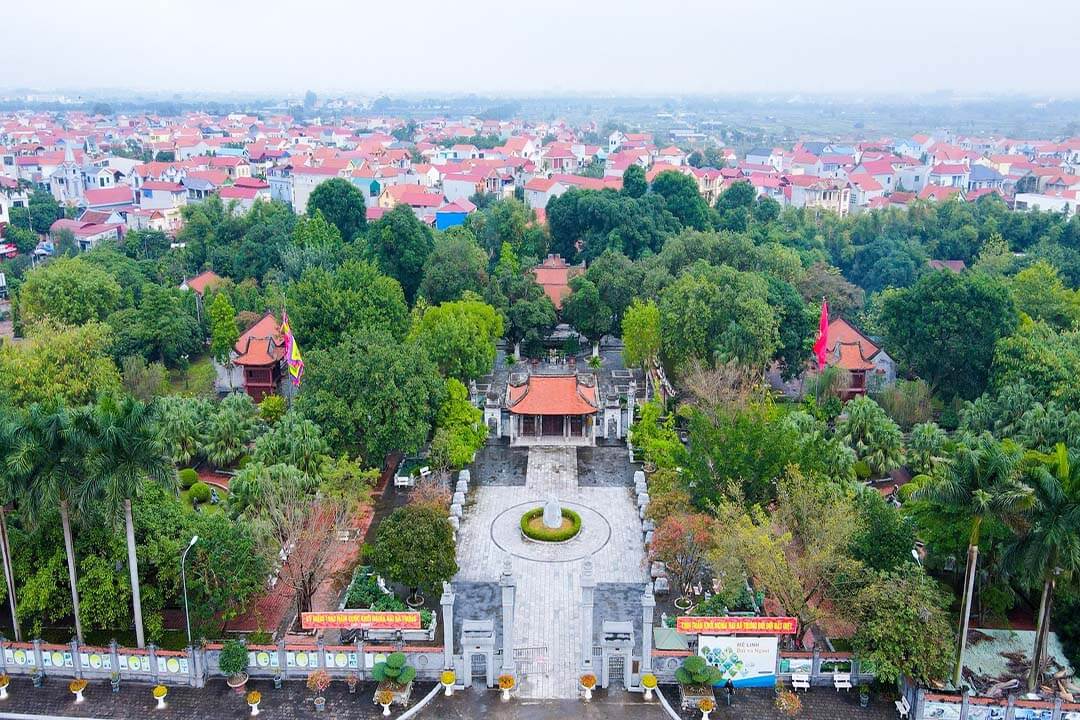
Where is Hai Ba Trung Temple located?
Situated in Hanoi’s Dong Nhan area, this central position provides easy access for visitors exploring the city. The temple’s location near the Red River enhances its tranquil atmosphere, offering a serene escape from the bustling urban environment. The surrounding area is rich in cultural and historical landmarks, allowing for a deeper exploration of Hanoi’s heritage during your visit.
How to get Hai Ba Trung Temple
Accessing the temple is straightforward, whether you are a resident or a visitor. Here are some options for reaching the site:
- Taxi: Taxi offers a direct and comfortable ride to the temple. Utilizing a reputable taxi service ensures a hassle-free journey without overcharging.
- Motorbike: Renting a motorbike provides flexibility and an opportunity to explore Hanoi’s streets at your own pace. It’s a popular choice for those who enjoy a bit of adventure.
- Walking: If you’re staying in or near the Old Quarter, walking to the temple is feasible and offers a chance to experience Hanoi’s vibrant street life and discover nearby attractions.
Best time to visit the temple
The most favorable time to visit Hai Ba Trung Temple is from October to April. During these cooler months, Hanoi enjoys mild temperatures and reduced humidity, making it a comfortable time for outdoor excursions. The pleasant climate enhances your experience, allowing you to appreciate the temple’s historic architecture and tranquil atmosphere without the discomfort of excessive heat.
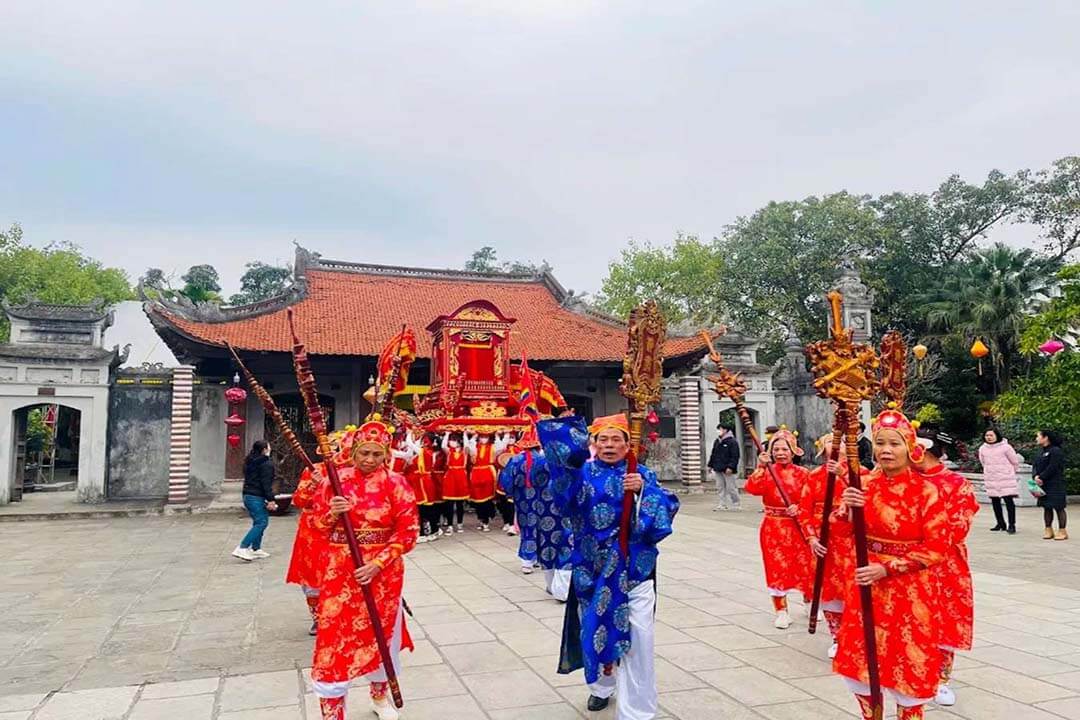
For the best experience, consider visiting in the early morning or late afternoon. These times help you avoid the peak midday sun and the heaviest crowds. By choosing these hours, you can enjoy a quieter and more reflective visit, giving you ample opportunity to explore the temple and its surroundings in a more serene and relaxed setting.
Things to do at Hai Ba Trung Temple
The temple offers a variety of activities that allow visitors to fully immerse themselves in the historical and cultural atmosphere of the site.
Take lots of nice pictures of the temple
The temple’s intricate architecture and serene surroundings provide ample opportunities for photography. Capture the details of the ancient structures, the tranquil gardens, and the various statues that commemorate the Trung sisters. This site is a paradise for those who love to document their travels through photos.
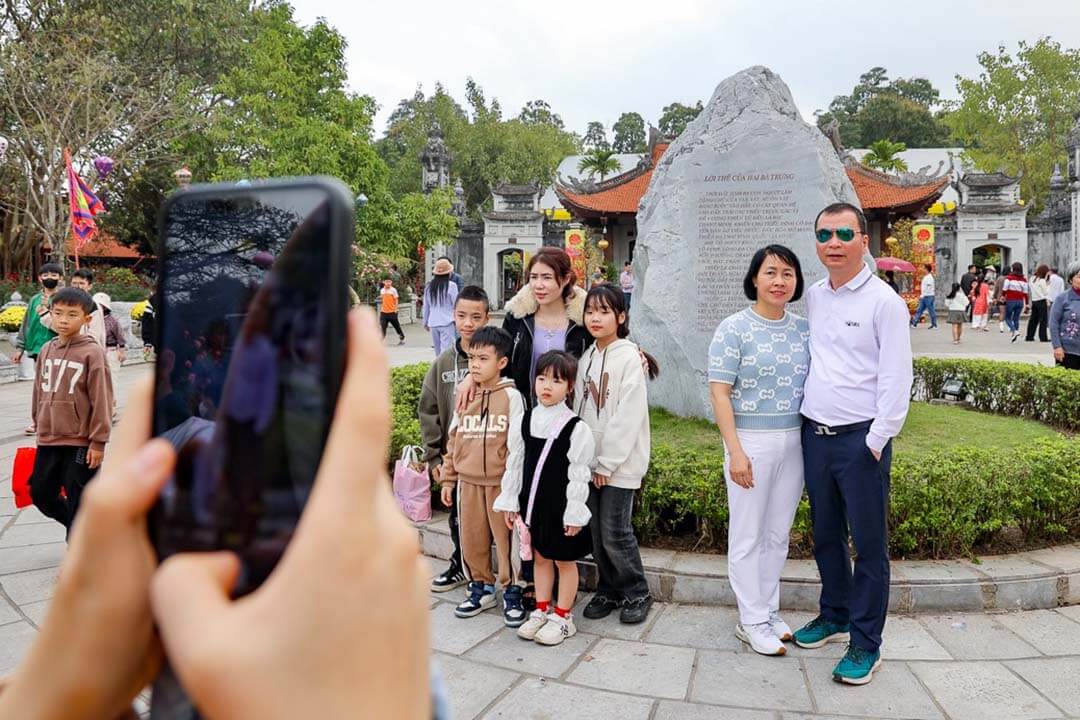
Explore Thi Sach Temple inside
Within the premises of Hai Ba Trung Temple is the Thi Sach Temple, which adds another layer of historical significance to your visit. This temple is dedicated to the husband of Trung Trac, who also played a crucial role in the rebellion against Chinese rule. Exploring this inner temple gives visitors deeper insights into the personal and political lives of the Trung sisters.
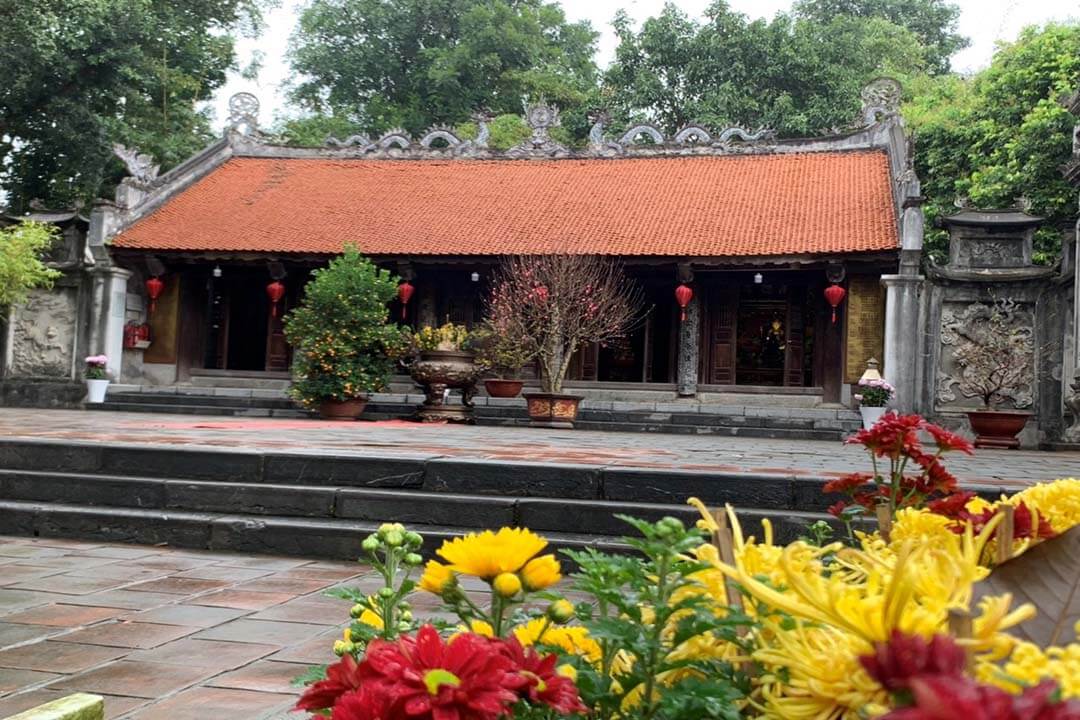
Enjoy Hanoi’s local food
After exploring this temple, immersing yourself in Hanoi’s culinary delights is a must. The streets around the temple are bustling with vendors and cozy eateries, offering a wide range of traditional Vietnamese dishes. Here are some local specialties you should not miss:
Pho: Pho is a quintessential Vietnamese dish, consisting of a fragrant broth filled with rice noodles, fresh herbs, and either beef or chicken. In Hanoi, pho is renowned for its clear, flavorful broth and quality ingredients. This hearty meal is a staple at many food stalls and restaurants, making it an essential part of your culinary exploration.- Bun Cha: Bun cha is a Hanoi specialty that includes grilled pork patties and slices served over a bed of rice noodles and fresh herbs, accompanied by a tangy dipping sauce. This dish gained international fame when former U.S. President Barack Obama enjoyed it during his visit to Vietnam, and it remains a beloved local favorite.
- Che (Vietnamese Sweet Soup –
Chè): For dessert, try che, a Vietnamese sweet soup made with ingredients like beans, fruit, jelly, and coconut milk. Che can be served hot or cold, and there are countless variations to choose from, each offering a delightful end to your culinary adventure.
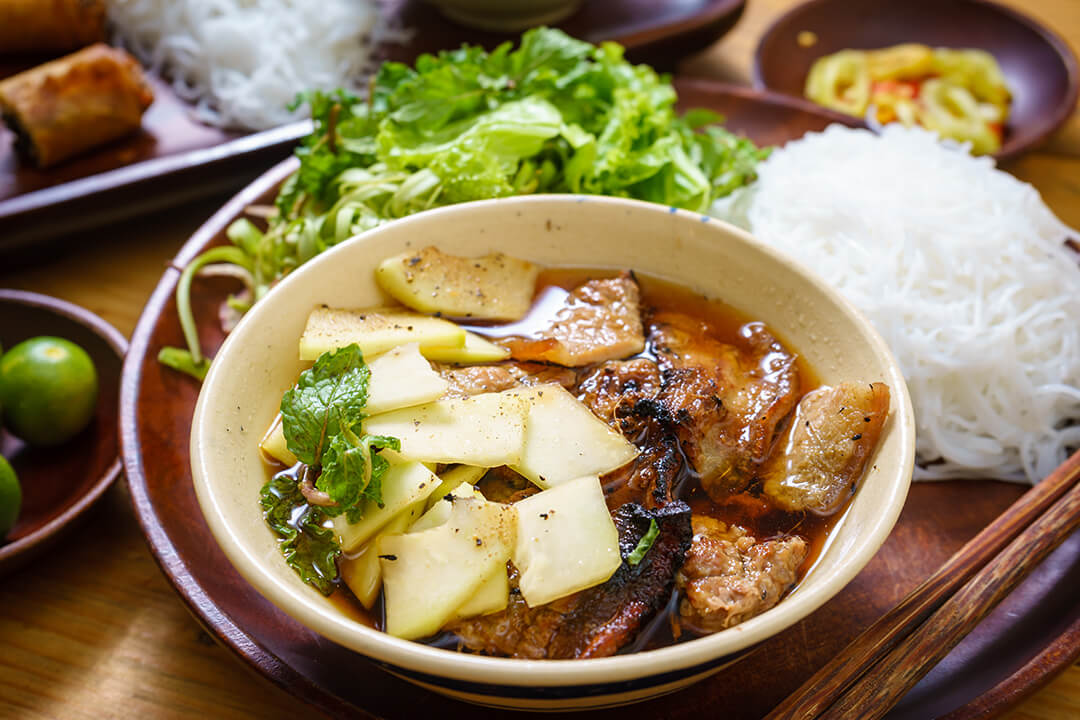
Exploring Hanoi’s local food scene not only satisfies your taste buds but also offers insight into the city’s rich culture and daily life. Whether you’re grabbing a quick bite from a street vendor or sitting down at a small eatery, the diverse flavors of Hanoi will leave a lasting impression.
Visit the most beautiful attractions in Hanoi
When in Hanoi, explore its rich history, culture, and beauty by visiting top attractions. Start with the Ho Chi Minh Mausoleum to pay respects to the revolutionary leader, then stroll around picturesque Hoan Kiem Lake, home to Ngoc Son Temple and the beautiful Huc Bridge. Experience local life in the vibrant Hanoi Old Quarter, known for its narrow streets and traditional shops. Finally, visit the stunning neo-Gothic St. Joseph’s Cathedral for a peaceful retreat from the bustling city.
Other attractions in Hanoi
Hanoi is filled with numerous attractions that cater to different interests. Whether you are a history buff, a food enthusiast, or simply looking to explore, the city has something for everyone.
Ho Chi Minh Mausoleum
The Ho Chi Minh Mausoleum is a site of profound historical significance, essential for anyone interested in Vietnam’s modern history and its journey to independence. The mausoleum, an imposing granite structure modeled after Lenin’s Mausoleum in Moscow, stands prominently in Ba Dinh Square. This is the very location where Ho Chi Minh declared Vietnam’s independence in 1945.
Inside the mausoleum, visitors can view the embalmed body of Uncle Ho, preserved in a glass case. This solemn experience reflects the deep respect and admiration that the Vietnamese people hold for their revered leader. The mausoleum not only commemorates Ho Chi Minh’s pivotal role in Vietnam’s history but also serves as a symbol of national pride and unity.
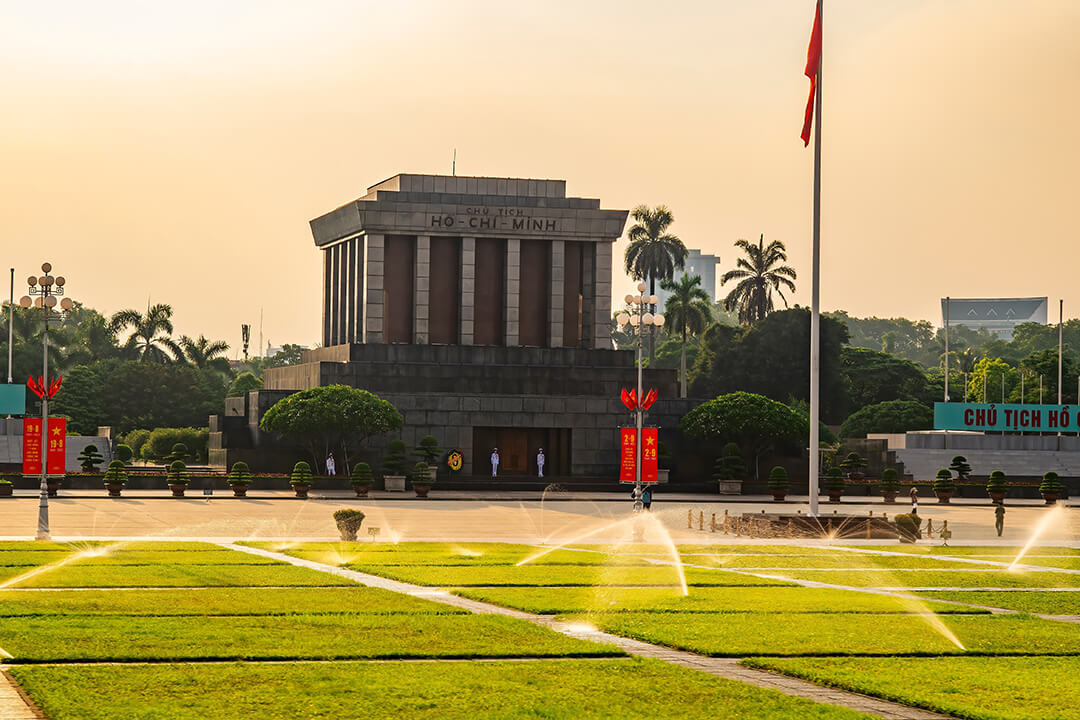
When visiting the Ho Chi Minh Mausoleum, dress modestly, covering shoulders and knees. Arrive early to avoid crowds to see the flag-raising ceremony at 6:00, and follow all rules, such as maintaining silence and refraining from photography. Prepare for a security check and be respectful of the queue and staff instructions.
Hoan Kiem Lake
Hoan Kiem Lake with its scenic beauty and cultural landmarks, is another top attraction in Hanoi. It’s where you can relax, take a walk, and enjoy the natural beauty in the middle of the city. At night, the illuminated bridges and temples create a magical atmosphere, making it a top attraction in the city.
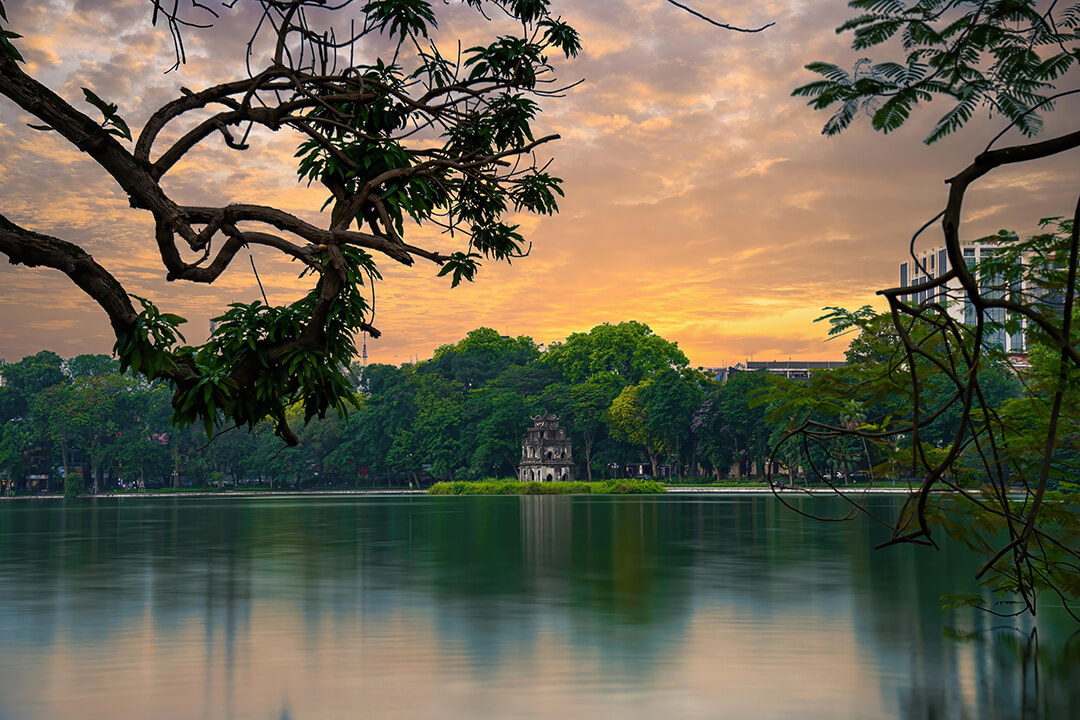
Hoan Kiem Lake, or “Lake of the Returned Sword,” is named after a legend where Emperor Le Loi (King Lê Lợi) received a magical sword from a turtle in the lake to defeat the Chinese Ming invaders. After his victory, the turtle reclaimed the sword and returned it to the lake. Visitors can stroll around the lake, cross the scenic Huc Bridge to Ngoc Son Temple on an island, or relax while watching locals practice tai chi or play chess. The lake is particularly enchanting at night when the bridge and temple are illuminated.
Hanoi Old Quarter
The Hanoi Old Quarter provides an authentic glimpse into the city’s traditional lifestyle, featuring bustling markets, historic homes, and a lively atmosphere. This area is a maze of narrow streets, each historically linked to specific trades like silk, silver, or herbs. The Old Quarter retains its original charm with a blend of French colonial architecture, ancient temples, and pagodas scattered throughout.
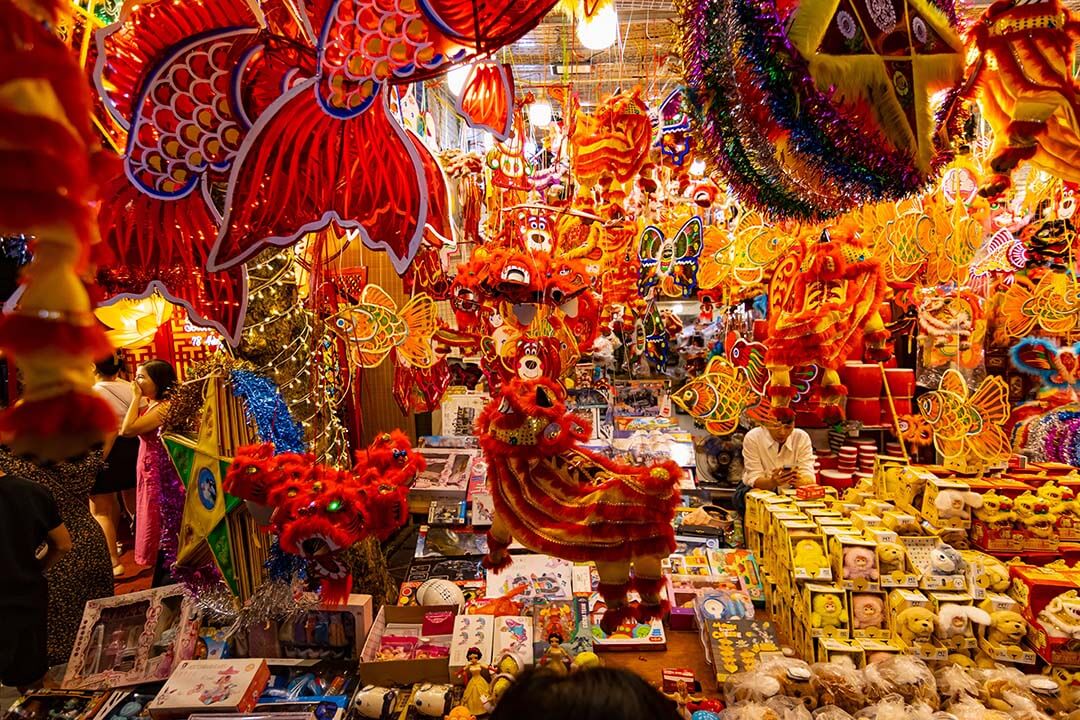
Autumn is the best time to visit Hanoi, when the weather is cool and pleasant, allowing visitors to fully immerse themselves in Vietnamese culture and enjoy the serene atmosphere. The streets are adorned with golden leaves, creating a picturesque setting that enhances the charm of the Old Quarter.
St. Joseph’s Cathedral Hanoi
St. Joseph’s Cathedral is a highlight for those interested in architecture and history. Its beautiful design and peaceful ambiance provide a stark contrast to the bustling city around it. The cathedral, built in 1886, is a striking example of neo-Gothic architecture, resembling the Notre Dame Cathedral in Paris. The cathedral is located in a quiet square, providing a peaceful respite from the busy streets of Hanoi.
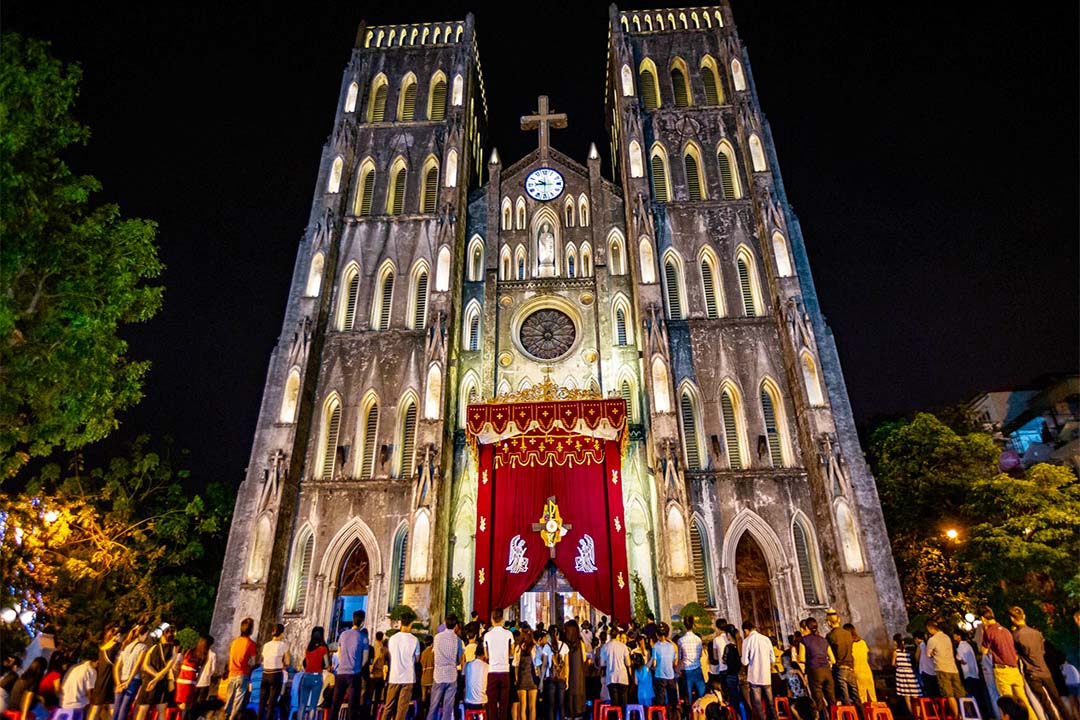
Visitors can attend mass, which is conducted in Vietnamese, or simply enjoy the serene atmosphere of the interior. The surrounding area is also worth exploring, with charming cafes and boutique shops adding to the appeal.
Essential tips for visiting Hai Ba Trung Temple
When planning your visit to the temple, keep these essential tips in mind to ensure a pleasant and respectful experience.
Clothing
It’s important to dress modestly when visiting the temple. As a place of worship and historical significance, appropriate attire is required. Avoid wearing shorts, sleeveless tops, or any clothing that may be considered disrespectful. Instead, opt for long pants or skirts and shirts with sleeves. This not only shows respect for the local culture but also ensures you have a comfortable visit. Additionally, wearing light and breathable fabrics will help you stay cool in Vietnam’s warm climate.
Respectful
When you visit the temple, you must respect its cultural and religious significance. Keep quiet, follow posted rules, and avoid using flash when taking photos inside the temple. Always ask for permission before photographing people, especially monks or worshippers, as a sign of respect for their privacy and spiritual practices. Dressing modestly, covering shoulders and knees, and removing shoes before entering the temple.
Local etiquette
Interacting respectfully with locals is crucial to enriching your visit to Hai Ba Trung Temple. Making an effort to learn a few basic Vietnamese phrases can significantly enhance your experience. For instance, greeting people with “Xin chào” (hello) and expressing gratitude with “Cảm ơn” (thank you) demonstrates your appreciation for their culture and hospitality. Politeness and friendliness go a long way in building rapport with locals, which not only helps you navigate the area more easily but also leaves a positive impression.
Visiting Hai Ba Trung Temple offers a profound glimpse into Vietnam’s rich history and cultural heritage. This sacred site, dedicated to the legendary Trung sisters, is a testament to their enduring legacy and the spirit of Vietnamese resistance. By exploring this temple and the surrounding attractions in Hanoi, you can immerse yourself in the vibrant history, culture, and beauty of the city, making your trip both educational and memorable.


